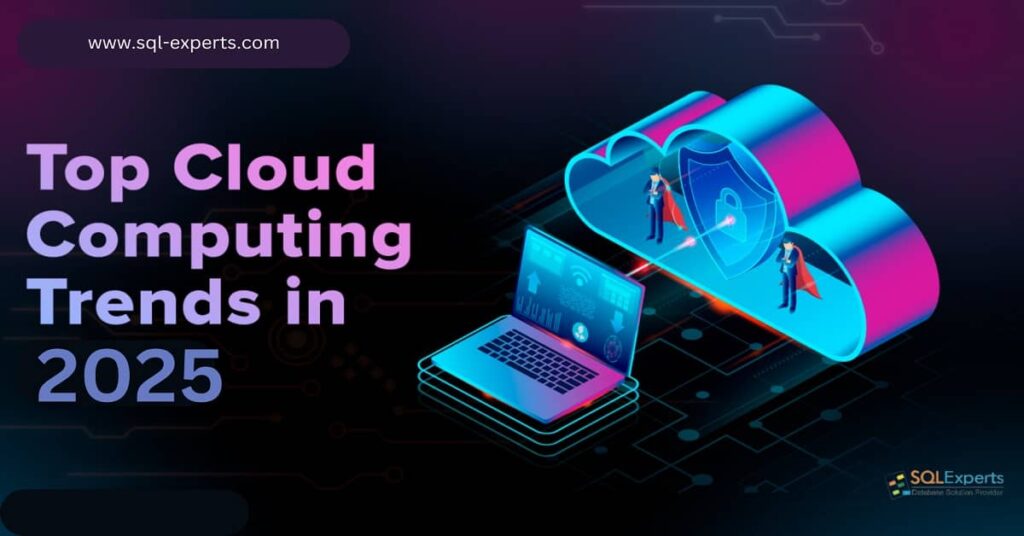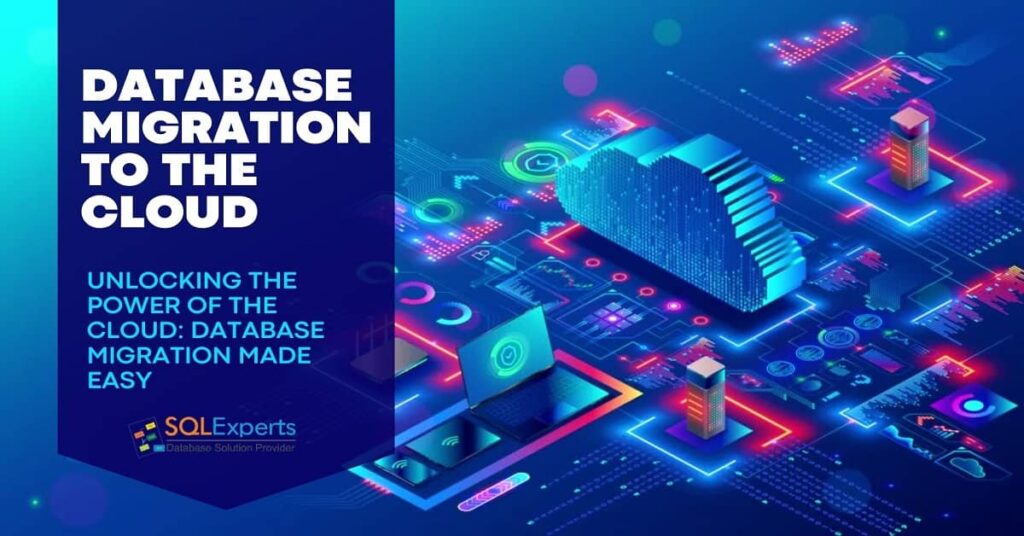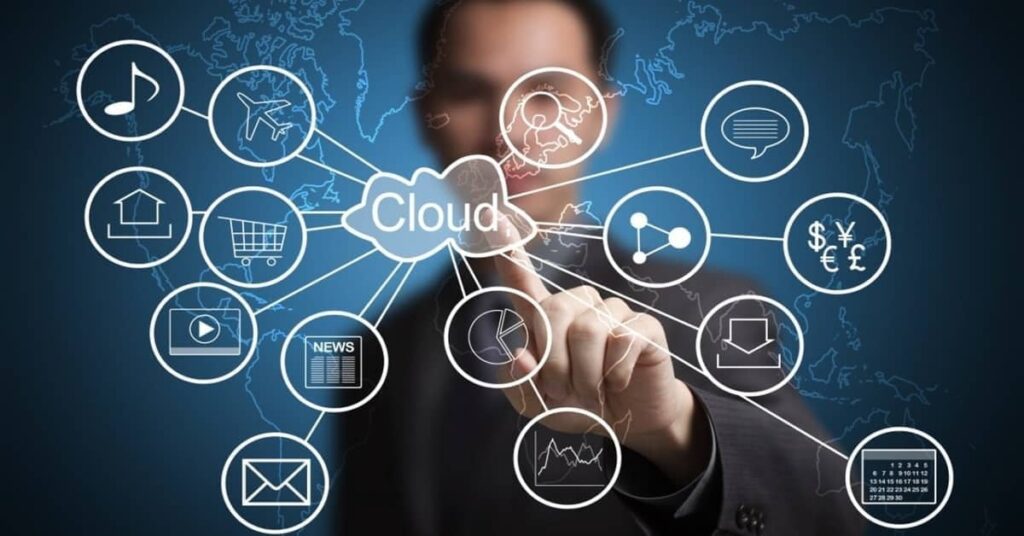Top Cloud Computing Trends – In the ever-changing digital landscape, cloud computing is one of the technological innovations that deal with radical change across sectors.
For the past ten years, the advent of cloud services has changed the way organizations store information, design software, and provide services.
Due to its scalable, affordable, and dynamic solutions, cloud computing has integrated into modern-day information technology systems.
While looking into the future even closer, which is 2025, even more influence of the cloud is anticipated, driven by innovations and other trends in the ways in which the cloud will be accessed and utilized.
Cloud computing has transformed the way we store and access data. It offers flexibility, scalability, and cost efficiency. But will cloud computing continue to grow?
In this blog post, we’ll explore the future trends cloud computing.
Moreover, we’ll examine current trends in the computing world, emerging technologies and market demands that could shape its growth.
Brief Overview of Cloud Computing
The term cloud computing denotes a way of using computing resources such as storage, processing power, databases, networking, software, and analytics provided over the Internet, also known as ‘the cloud.’
Rather than keeping physical data centers and servers, companies are leasing cloud services from other companies such as Amazon Web Services (AWS), Microsoft Azure or Google Cloud Platform.
These platforms offer multiple types of services:
- Infrastructure as a Service (IaaS): The most basic service offered by cloud computing that provides virtualized computing resources such as servers and storage.
- Platform as a Service (PaaS): Provides an environment for development and deployment, enabling developers to create, test and deploy applications without need to handle the infrastructure underneath.
- Software as a Service (SaaS): Releases and manages software applications via the web, thus eliminating the requirement for installations on personal computers.
Why is Cloud Computing the Future?
Cloud computing signifies a fresh phase in the advancement of information technology.
The use of information technology is fast growing nowadays, hence the advantages it offers are indispensable.
The ability to scale services up or down, pay for what you use only and availability of services everywhere every time is nothing less than disruptive innovation.
In addition to this, cloud computing enhances consideration of modern trends like AI and machine learning which depend on huge processing power and data storage capabilities which would not be easy to manage without cloud services.
10 Cloud Computing Trends for 2025
The world of cloud computing is evolving rapidly. As we approach 2025, new trends are shaping the landscape. Businesses must stay ahead to remain competitive.
Here, we will explore top cloud computing trends.
These trends will influence how organizations utilize cloud technology in the coming years.
Let’s dive into and find out ‘is cloud computing an emerging technology‘.
-
Multi-Cloud and Hybrid Cloud Adoption
In 2030, the frenzy of adopting multi cloud strategy must envisaged to reach great heights.
A multi cloud approach means that an organization can broker services from different clouds thus preventing total dependency on any one cloud.
In addition, creating cloud based redundancies becomes cost effective, performance efficient and non compromising.
Public clouds have the added advantage of hybrid cloud environments over simply on premises deployed clouds.
As the digital cloud reshapes organizational structures, multi-cloud infrastructures, where enterprises can interact freely with the major service providers, will become the architecture of choice for many enterprises to meet their needs while maintaining business continuity; resilience of clients’ services is ensured and can pick the most appropriate service for the particular workload.
The importance of cloud provider interoperability will rise as organizations request that their systems function across cloud providers.
-
Edge Computing Integration
A concept of data processing that involves utilizing resources that are located within a short distance rather than heavy reliance on central cloud data resources is known as edge computing.
With the increasing population of IoT devices, the above will have to be provided in order to optimize the level of latency and bandwidth, thus allowing instant processing of data.
It is estimated that by the year 2025, tide of edge-cloud hybrid architecture will reach its peak.
More businesses will encroach into the realm of edge computing by embedding it within their existing cloud infrastructure as a means of processing urgent data at the periphery while accessing the cloud for downstream data storage and analysis.
There will also be enhanced implementation of these technologies within sectors like medical services, self-driving cars, and smart cities.
-
Serverless Computing Expansion
Within five years, this practice of coding and deploying applications without the need for any knowledge of the infrastructure will become widely accepted.
Serverless platforms automatically provision resources relative to the application, thus allowing further scaling while reducing cost of operation.
Because there is no need to care about the infrastructure component, serverless computing helps programmers to concentrate on writing code alone and this helps improve speed of innovation.
More organizations would embrace serverless platforms owing to their ease of use, affordability and the fact that they are able to grow with demand.
-
AI and Machine Learning in the Cloud
While the adoption of Cloud based Artificial Intelligence and Machine Learning (ML) services is prevalent today, these services are expected to advance even further by the year 2025.
There will be greater availability of advanced and user-friendly artificial intelligence and machine learning technologies that will limit the access on complex data analysis, predictive modeling and automating features within business use cases.
In the year 2025, the focus of the enterprises will shift more towards performing business operations on intelligence and automation offered within the cloud services with regards to analyzing customer habits, improving business processes and making decisions.
Services offered in the cloud will utilize artificial intelligence to relieve humans from numerous duties, including processing information and communicating with interaction robots acting as customer consultants.
-
Quantum Computing and Cloud Integration
The power of quantum computing is expected to disrupt various sectors by addressing complex issues that classical computers cannot manage.
Even if we are still at the initial stages of quantum development, it is foretold that by 2025 quantum computing would be largely available as a service over the cloud.
At the moment AWS, Google, IBM and many other major cloud providers have made significant investments into quantum technology research, and so by the year 2025 the cloud may be commercially available for quantum computing applications for the first time.
Thus, companies would be able to use quantum computing resources without purchasing costly equipment.
-
Cloud Security and Zero Trust Architecture
With the concerted effort by many institutions into the cloud, security fears are on the rise.
By 2025, the security of cloud infrastructures will advance horizontally to encompass more measures focusing on the concept of the cloud, which is the zero trust architecture (ZTA).
In a zero-trust environment, trust is never assumed to exist for any user or device and therefore verification is required for every request for access.
More cloud providers will provide ZTA as a service thereby enabling firms secure sensitive information, manage risks of internal/insider threats, and meet high compliance demands.
More security solutions like advanced encryption solutions and AI based threat prevention systems will complement cloud secured networks.
-
Sustainability and Green Cloud Computing
As the importance of sustainability and cutting down on carbon emissions increases, the focus of the cloud providers will shift towards the greening of their data centers.
Looking ahead, by 2025, we will witness significant progress in green cloud computing with data environments being powered by renewable energy and technologies that help in the conservation of energy.
Corporations will already largely select their cloud service offers according to the environmental approaches and sustainability practices of the provider.
The green cloud will not only save costs, but will also promote corporate social responsibility.
-
Cloud-Native Applications and Microservices Architecture
Cloud-native applications make the most of cloud environments through the use of microservices, containers and continuous delivery pipelines.
In fact, by 2025, every new application that is designed will have a cloud-native development model because of its less complex and more scalable architecture and fast-tracking of innovation processes.
Microservices architecture, which is the approach of developing applications as a suite of modular services, will lead to faster time to market and simpler versioning.
The adoption of cloud-native technologies by more organizations will lead to resilient applications that are fit for purpose in varying cloud structures.
-
Blockchain as a Service (BaaS)
The most popular application of this technology has been in the cryptocurrency – coinage and transactions.
However, distribution or implantation of such a technology would cut across different organizations and sectors; for example, financial services, supply chain performances and even health services.
Looking ahead to 2025, Blockchain Solutions (BS) will be a market trend worth tracking and numerous commercial organizations will start issuing cloud-centric solutions for end-users to deploy efficiently pre-designed and pre-configured blockchain solutions.
The all-encompassing BaaS model will empower enterprises to create secure fully functional federated applications without having to own the blockchain infrastructure.
BaaS will also support working in conjunction with other cloud services which will promote utilization of the technology to several other applications.
-
5G and Cloud Synergy
The implementation of 5G networks is set to transform the cloud computing landscape thanks to a major increase in data transfer speeds and decreased latency.
By the Year 2025, 5G complemented with cloud computing will allow for the implementation of real-time applications such as augmented and virtual realities and the operations of self-driven cars.
The ability of 5G networks to offer high speed connectivity will assist edge computing in its quest to bring data processing closer to the data source.
Along with the cloud technologies, 5G implementation will help organizations to roll out transformative applications that require high-speed real-time data processing.
In short, future of cloud computing 2025 is set to transform how businesses operate and individuals access technology.
With growing capabilities in security, artificial intelligence, and flexibility, the cloud will become even more essential for everyone.
Companies must adapt to this change to stay competitive and efficient. Embracing these advancements now will prepare you for the future.
Stay informed and ready to seize the opportunities that cloud computing offers.
Conclusion – Is Cloud Computing The Future?
Cloud computing holds great promise for the future, with multi-cloud deployments, edge devices, or the convergence of artificial intelligence on clouds, among other trends, predicted to disrupt the industry by 2025.
Given the trends in favor of cloud technology and its increased rates of adoption by enterprises, these changes will inform how applications are created, how data is created and processed, and how services are offered.
In the modern marketplace, technological advancement means that any business that intends to remain relevant must respond promptly to such trends.
Be it the use of quantum computing to solve some of the complex challenges needing solutions or even embracing the green cloud as a way of reducing effects to the environment, the cloud will still remain a core of creativity, productivity and development for the years to come.



